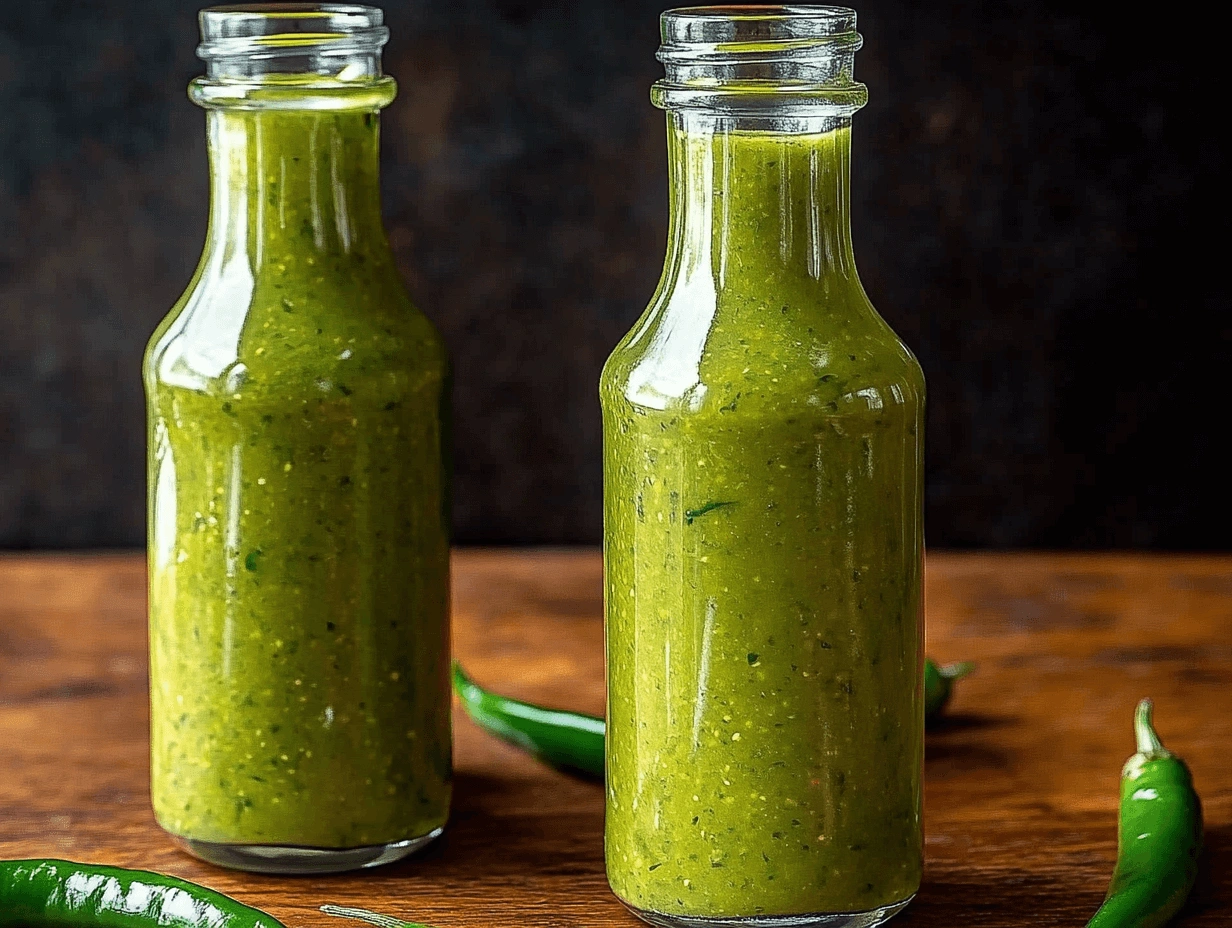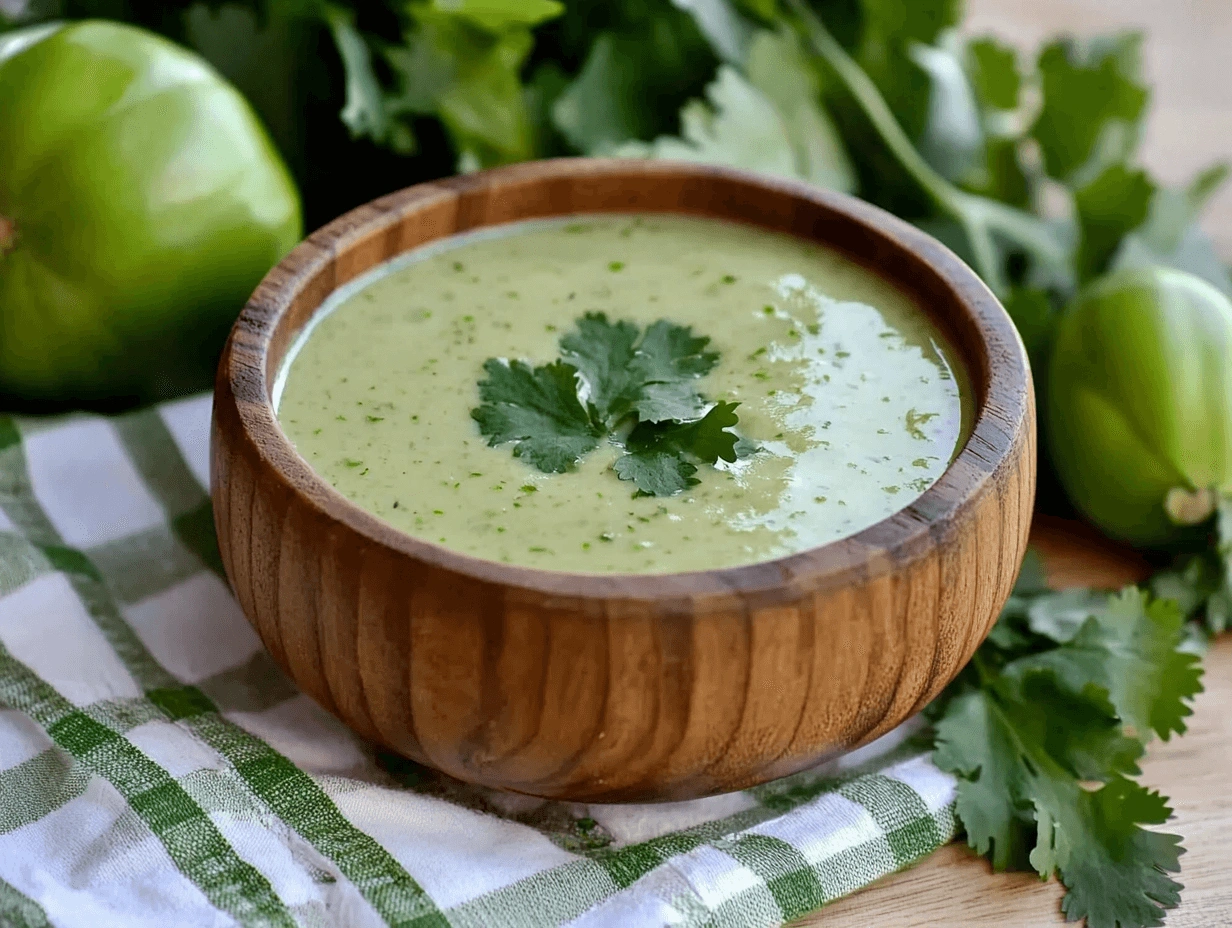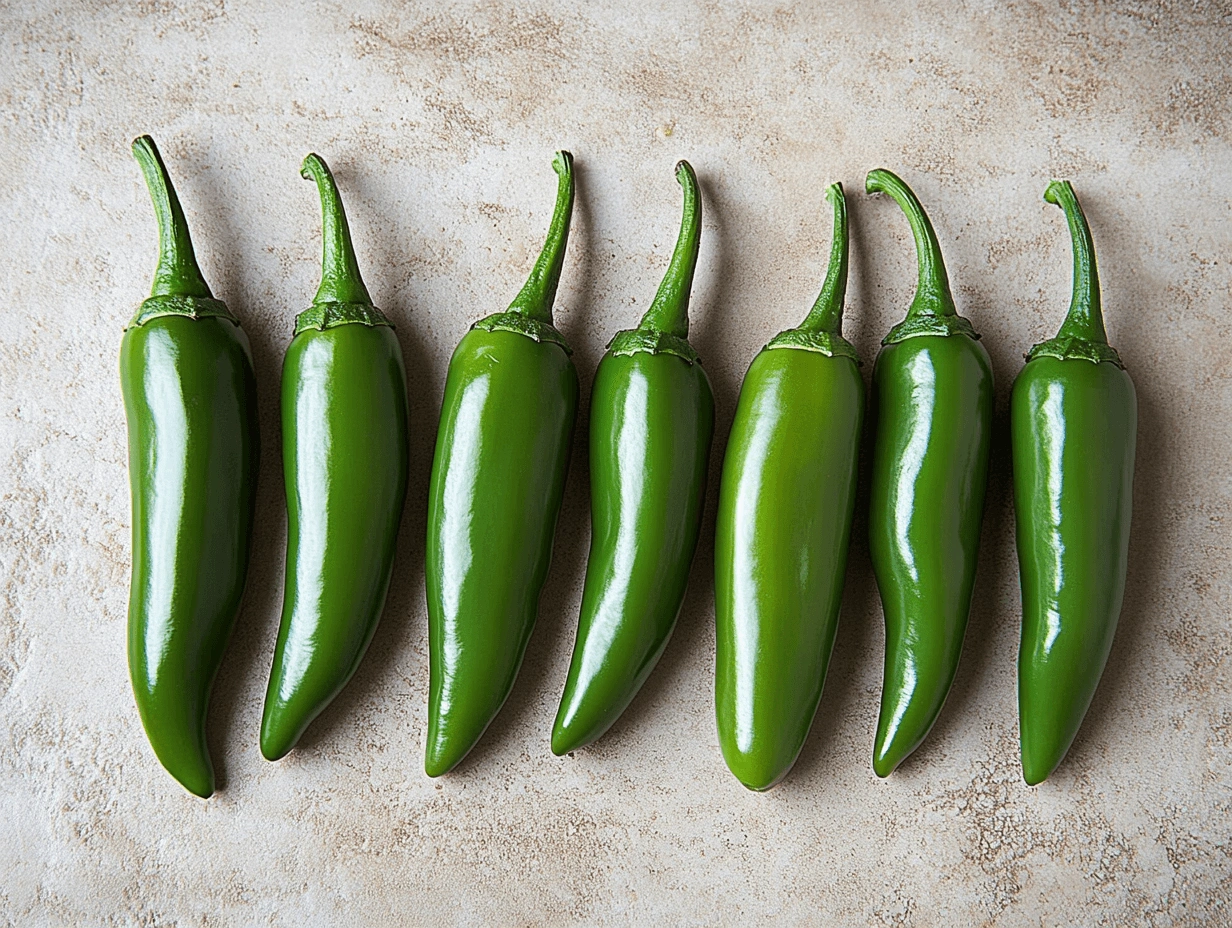Introduction to Serrano Pepper
What Is a Serrano Pepper?
The serrano pepper is a small, spicy chili that hails from the mountainous regions of Puebla and Hidalgo in Mexico. Recognized for its bright green hue and thin skin, the serrano pepper has become an essential ingredient in Mexican cuisine. The name “serrano” is derived from the Spanish word “sierra,” which means “mountain,” reflecting its high-altitude origins.
Known for its balance of flavor and heat, the serrano pepper has a Scoville heat rating ranging from 10,000 to 23,000. This makes it spicier than jalapeños but still retains a crisp, vibrant flavor. Its versatility makes it a go-to ingredient for salsas, marinades, and pickled garnishes. Whether raw or lightly cooked, the serrano pepper brings bold, fresh flavors to countless recipes.
For those who enjoy spicy dishes balanced with sweetness, pairing a serrano pepper recipe with a dessert like The Ultimate Guide to the Perfect Rice Krispie Treat Recipe can create an exciting contrast.
Why Cook with Serrano Pepper?
Serrano peppers are prized for their ability to enhance dishes with moderate heat without overpowering other flavors. Their culinary versatility is complemented by their health benefits:
- Rich in Nutrients: Serrano peppers are an excellent source of vitamin C, which supports immune health and glowing skin.
- Capsaicin Benefits: Capsaicin, the compound responsible for their heat, has been shown to boost metabolism and reduce inflammation.
- Packed with Antioxidants: The antioxidants in serrano peppers can help neutralize free radicals, promoting overall well-being.
These qualities make the serrano pepper a must-have for creating traditional Mexican dishes like salsa verde or exploring new culinary adventures like spicy stir-fries.
To counterbalance the spiciness, consider serving serrano pepper-based recipes alongside a creamy dish, such as a Corn Casserole Recipe for a harmonious flavor profile.
The Serrano Pepper Kitchen Basics
Choosing the Perfect Serrano Pepper
When selecting serrano peppers, opt for ones that are firm, glossy, and vibrant in color. Although green is the most common, ripe red or orange serrano peppers offer a sweeter, slightly milder taste. Avoid any peppers that appear wrinkled, have blemishes, or feel soft to the touch, as these are signs of age or damage.
Tips for Selection:
- Freshness Check: Snap the stem—if it breaks cleanly, the pepper is fresh.
- Size Matters: Smaller serrano peppers are typically more flavorful and have a crisp texture.
Handling and Preparing Serrano Pepper Safely
Due to the serrano pepper’s spiciness, handling it requires caution to avoid skin irritation or accidental contact with the eyes.
Safety Tips:
- Wear Gloves: Always use gloves when slicing or deseeding serrano peppers.
- Wash Hands Thoroughly: Even if gloves are used, wash your hands immediately after handling the peppers.
Preparation Tips:
- Reducing Heat: Removing the seeds and inner membranes will significantly lower the spice level.
- Neutralizing Spice: Soaking sliced serrano peppers in cold water with a splash of vinegar can help mellow their heat.
Storing Serrano Pepper
Proper storage can extend the shelf life of serrano peppers:
- Refrigeration: Store fresh serrano peppers in a paper bag in the crisper drawer for up to two weeks.
- Freezing: To freeze, wash and dry the peppers thoroughly, then place them in an airtight bag. Frozen serrano peppers can last up to six months.
For those interested in preserving other fresh ingredients, the Ultimate Branzino Recipe Guide offers additional tips and techniques for maximizing freshness.
Classic Serrano Pepper Recipes

Homemade Serrano Hot Sauce
Ingredients:
- ½ lb serrano peppers
- 1 garlic clove
- ¼ cup white vinegar
- ¼ cup water
- Pinch of salt
Instructions:
- Roast the serrano peppers in a skillet until their skins are lightly charred.
- Blend the roasted peppers with garlic, vinegar, water, and salt until smooth.
- Simmer the mixture on low heat for 10 minutes to deepen the flavors.
- Store in an airtight container in the refrigerator for up to two weeks.
This homemade hot sauce delivers a bold, smoky flavor that spice enthusiasts will love. For a milder version, combine serrano peppers with sweet bell peppers. Serve it alongside a hearty main dish like Million Dollar Chicken Casserole for a well-rounded meal.
Authentic Salsa Verde
Salsa verde is a staple of Mexican cuisine that highlights the tangy, fresh flavor of serrano peppers. It’s perfect as a taco topping or a dip for tortilla chips.
Ingredients:
- 6 tomatillos, husked
- 2 serrano peppers
- 1 garlic clove
- ¼ cup fresh cilantro
- Salt to taste
Instructions:
- Boil the tomatillos and serrano peppers in water for 5 minutes.
- Blend the cooked ingredients with garlic, cilantro, and salt until smooth.
- Chill before serving.
Pro Tip: Roast the tomatillos and serrano peppers before blending for a smoky flavor. Pair this salsa verde with a spicy dish like a Spicy Taco Dip Recipe to elevate your appetizer spread.
Quick and Easy Serrano Pepper Snacks
Pickling serrano peppers is a simple way to preserve their flavor while adding a tangy, spicy element to meals.
Ingredients:
- 1 lb serrano peppers
- 2 cups white vinegar
- 1 cup water
- 1 tbsp sugar
- 2 tsp salt
- 2 garlic cloves, crushed
- Optional: spices like black peppercorns, coriander seeds, or bay leaves
Instructions:
- Prepare the Peppers: Cut the peppers into slices or keep them whole, but if leaving them whole, make small cuts to allow the brine to seep in effectively.
- Make the Brine: Heat vinegar, water, sugar, salt, and garlic in a saucepan until it boils.
- Pack the Jars: Place the peppers into sterilized jars, then pour the hot brine over them, ensuring full coverage.
- Cool and Store: Seal the jars tightly, let them cool to room temperature, and refrigerate. Properly stored pickled serrano peppers can last up to a month.
If you enjoy pickled snacks, try this Easy Pickled Sausage Recipe, for another tangy treat.
Three-Pepper Guacamole: Adding a Spicy Twist to a Beloved Favorite
Ingredients:
- 3 ripe avocados
- 1 serrano pepper, finely chopped
- 1 jalapeño pepper, finely chopped
- 1 poblano pepper, roasted and diced
- Juice of 1 lime
- 2 tbsp chopped cilantro
- Salt to taste
Instructions:
- Mash the Avocados: In a mixing bowl, mash the avocados until they reach your desired consistency.
- Mix the Peppers: Add the serrano, jalapeño, and roasted poblano peppers to the mashed avocado.
- Add Seasonings: Stir in lime juice, cilantro, and salt. Serve with chips or as a taco topping.
Serrano Pepper for Main Dishes
Huevos Rancheros: Enhancing a Classic Breakfast with Serrano Pepper
Adding serrano peppers to huevos rancheros enhances this traditional breakfast dish with an extra layer of spice and complexity.
Ingredients:
- 4 corn tortillas
- 4 eggs
- 2 serrano peppers, diced
- 4 tomatoes, chopped
- 1 small onion, diced
- 1 garlic clove, minced
- 1 tbsp olive oil
- Salt and pepper to taste
Instructions:
- Cook the Sauce: Heat olive oil in a skillet and sauté the onions, garlic, and serrano peppers until fragrant. Add tomatoes and let the sauce simmer for 10 minutes. Season with salt and pepper.
- Fry the Tortillas: Crisp the tortillas in a separate skillet until lightly golden.
- Prepare the Eggs: Cook the eggs sunny-side up in a nonstick pan.
- Assemble the Dish: Place an egg on each tortilla and top with the tomato-serrano sauce.
For a complete breakfast, explore ideas from the Perfectly Round Mini Pancakes Guide as a side dish.
Spiced Grilled Meats: Adding Smoky Depth with Serrano Pepper Marinades
Marinating meat with serrano peppers adds bold heat and flavor, making it ideal for grilling.
Marinade Ingredients:
- 3 serrano peppers, minced
- 1 cup orange juice
- ¼ cup olive oil
- 2 garlic cloves, crushed
- 1 tsp cumin
- 1 tsp smoked paprika
- Salt and pepper to taste
Instructions:
- Combine Marinade Ingredients: Blend all ingredients into a smooth mixture.
- Marinate the Meat: Marinate chicken, beef, or pork in the mixture and refrigerate for a minimum of 2 hours.
- Grill: Cook the meat on a hot grill, basting occasionally with the leftover marinade for added flavor.
To balance the spice, serve this dish with a creamy Corn Casserole on the side.
Unique and Creative Uses for Serrano Pepper

Serrano Pepper Paste
Serrano pepper paste is a fantastic way to infuse stews and sauces with bold, spicy flavor.
How to Make Serrano Pepper Paste:
- Roast 10 serrano peppers until the skin blisters.
- Peel and deseed the peppers.
- Blend the peppers with 1 teaspoon of olive oil and a pinch of salt until you achieve a smooth consistency.
- Keep the paste in an airtight container and refrigerate for up to two weeks.
Infused Oils and Spreads: Crafting Homemade Serrano-Infused Olive Oils and Butters
Infusing oils and butters with serrano peppers enhances their flavor, adding versatility to a variety of dishes.
Serrano-Infused Olive Oil:
- Heat 1 cup of olive oil with 2 sliced serrano peppers over low heat for about 10 minutes.
- Strain the oil into a clean bottle and store it in a cool, dark place.
Serrano Butter:
- Mix softened butter with finely minced serrano peppers, lime zest, and a pinch of salt.
- Chill the butter in the fridge until firm. Use it as a spread for bread or as a flavorful addition to grilled vegetables or seafood.
Serrano Pepper Across Global Cuisines
Mexican Classics: Traditional Dishes Highlighting Serrano Pepper
Serrano peppers are an essential ingredient in numerous traditional Mexican recipes:
- Salsa Verde: This tangy, spicy condiment is a perfect accompaniment for tacos and grilled meats.
- Pico de Gallo: A zesty tomato salsa with a bold touch of spice from finely chopped serrano peppers.
- Pozole Verde: A hearty soup with a serrano-infused broth that forms the base of this classic dish.
Asian and Fusion Dishes
Serrano peppers have gained popularity in fusion cuisines due to their bold heat and adaptability:
- Thai Stir-Fries: Brings an additional touch of heat when finely chopped and included.
- Indian Curries: Enhances the spice level of masala bases.
- Korean Kimchi: Offers a unique twist to this fermented favorite when serrano peppers are included.
For even more global inspiration, try the Spicy Orange Chicken Recipe, which highlights creative uses of spicy ingredients like serrano pepper.
Health Benefits of Serrano Pepper
Nutritional Profile: Vitamins, Antioxidants, and Metabolic Benefits
Serrano peppers are not only about spice but also offer significant nutritional value:
- Rich in Vitamin C: Helps support the immune system and contributes to healthy skin.
- Vitamin A and Beta-Carotene: Essential for vision health and immune support.
- Rich in Antioxidants: Contains compounds like capsaicin that reduce inflammation and combat free radicals, potentially lowering the risk of chronic conditions.
- Boosts Metabolism: Capsaicin contributes to better metabolism and can aid in managing weight.
Handling the Heat: Suggestions for Spice Sensitivity
For those who find serrano peppers too spicy, these methods can help make them more approachable:
- Take Out Seeds and Membranes: These sections of the pepper hold the majority of its spiciness.
- Pair with Dairy: Ingredients like yogurt, sour cream, or cheese can neutralize the spiciness.
- Cook the Peppers: Heat reduces the intensity of capsaicin, making the peppers milder.
- Combine with Mild Ingredients: Mix serrano peppers with tomatoes or sweet bell peppers to balance the flavor.
These adjustments make it easy to enjoy serrano peppers without overwhelming heat.
Pairing Serrano Peppers with Complementary Ingredients
Best Ingredient Matches
Serrano peppers pair well with ingredients that provide contrast or complement their spice:
- Sweet Flavors: Mango, pineapple, and honey balance the spiciness.
- Creamy Bases: Avocado, cream cheese, and coconut milk provide a creamy texture and help mellow the spice.
- Herbs and Spices: Lime, garlic, cilantro, and cumin work harmoniously with serrano peppers.
- Grains and Legumes: Rice, quinoa, and beans act as neutral bases for absorbing the spice.
For inspiration on integrating complementary ingredients, try the Million Dollar Chicken Casserole Recipe, which can be enhanced with a touch of serrano heat.
Drink Pairings: Beverages That Cool the Palate While Enhancing Flavor
Pairing the right beverages with serrano-infused dishes enhances the dining experience:
- Milk-Based Drinks: Drinks such as milkshakes or lassi can help reduce the spiciness.
- Citrus Beverages: Limeade, lemonade, or orange juice complement the spiciness.
- Beer: Light lagers or slightly sweet wheat beers pair beautifully with spicy foods.
- Herbal Teas: Iced chamomile or mint tea offers a refreshing counterbalance to the spice.
These pairings can make serrano-infused dishes more enjoyable.
Frequently Asked Questions About Serrano Peppers
How to Substitute Serrano Peppers? Alternatives and Adjustments in Recipes
If serrano peppers are unavailable, the following alternatives can be used:
- Jalapeños: A milder alternative with a comparable texture and taste.
- Thai Chili Peppers: A spicier substitute for those who prefer extra heat.
- Poblano Peppers: Offer a milder, earthier taste for recipes requiring less spice.
- Cayenne Peppers: A ground spice alternative that replicates the heat level.
Adjust the quantity of substitutes to maintain the desired flavor and spiciness in your dish.
Storage Tips
Proper storage methods can help extend the shelf life of serrano peppers:
- Refrigeration: Keep fresh peppers in a paper bag in the crisper drawer for up to two weeks.
- Freezing: Wash, dry, and store whole peppers in an airtight bag. They can last up to six months and are ideal for cooking.
- Drying: Use a dehydrator or hang them in a ventilated area, then grind into powder for seasoning.
- Pickling: Pickle serrano peppers to store them for extended use.
With these methods, you can store and enjoy serrano peppers whenever needed.
For more insights into storing ingredients, explore the Perfectly Round Mini Pancakes Guide for tips on keeping ingredients fresh.
Conclusion
Serrano peppers are a versatile ingredient that adds both great taste and nutritional benefits to many dishes. Whether you’re pickling them, adding them to main courses, or experimenting with global cuisines, their versatility ensures they remain a favorite in the kitchen. Moreover, their nutritional benefits and compatibility with complementary ingredients make them a valuable addition to any diet.
For even more inspiration on incorporating serrano peppers into your meals, visit Chili Pepper Madness, a trusted authority on everything spicy. By exploring these recipes and tips, you can unlock the full potential of serrano peppers and enjoy their unique flavor in countless ways.


1 thought on “Serrano Pepper: Recipes, Benefits, and Tips”